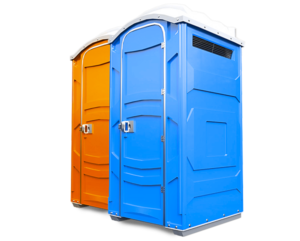Stamped Concrete Dallas is decorative concrete that resembles flagstone, natural stone, tile, brick, or wood. After pouring the concrete, an experienced contractor uses large stamps with patterns pressed into it while it’s still soft.
Maintaining a stamped concrete surface requires periodic cleaning and resealing. Periodic washings help remove dirt and grime, while resealing helps prevent color fading from exposure to sunlight and de-icing salts.

The durability of stamped concrete makes it a great option for patios, pool decks and driveways. It can withstand heavy traffic and weathering without showing any signs of wear or tear. Plus, it’s a more affordable option than using natural materials like flagstones or bricks.
The pattern and color options for stamped concrete are endless. You can create a unique design or choose a style that matches your home’s architecture or surrounding landscape. It’s a popular choice for homeowners who want to add character and charm to their homes.
Stamped concrete can look extremely realistic and is a great way to update your outdoor space. It’s also easy to maintain and can last for years with regular cleaning and resealing.
A stamped concrete patio, walkway or driveway can increase the value of your home. It’s also a green alternative to other materials. For example, it uses less energy to produce than other types of paving materials. Furthermore, it doesn’t require the use of fossil fuels to manufacture and transport.
If you’re considering having stamped concrete installed in your home, it’s important to work with a professional. They will have the experience and expertise to ensure the project is completed correctly. Additionally, they will know how to mix and prepare the concrete to achieve the desired results.
One of the most common concerns people have about stamped concrete is its durability. However, it’s important to note that stamped concrete is just as durable as other types of paving materials. In fact, it’s even more durable because it’s poured and cured under controlled conditions. In addition, it’s often reinforced with steel rods to strengthen it and make it more resistant to impact damage. Finally, it’s recommended to use a quality sealant on stamped concrete to prevent stains and prolong its lifespan.
Fire Resistant
Concrete is a much more cost-effective choice than pavers or stone for a driveway, patio or pool deck. Additionally, it is a strong and durable option that can endure harsh weather conditions. It also holds up against fire better than many other materials. However, it is crucial that a professional contractor is used to ensure the proper installation of your stamped concrete project.
In addition to its strength, durability and affordability, stamped concrete offers homeowners a wide range of design options. It can be made to look like natural building products, such as flagstone, cobblestone, brick and even wood planks. It can be colored during the pouring process or added afterwards with a powdered color additive. Creating a secondary color is an easy way to achieve the desired effect and enhance the look of your patio, walkway or driveway.
After the concrete has been poured, an experienced contractor uses a special stamp to press a pattern into it. The stamps can be purchased from a number of companies and come in various sizes. When ordering a set of stamps, it is important to have enough for the entire area you wish to cover. It is also wise to add a few extra ones for future projects.
The concrete must be allowed to cure for a while after being stamped, as this will help the concrete solidify. Once the concrete has cured, the contractor will apply a sealer to the surface to protect it from damage and staining. This will also help enrich the color and give it a nice sheen.
Staining is another great way to enhance the look of your patio, walkway or concrete driveway. It is possible to achieve a range of effects with staining, from opaque to translucent, matte or glossy. Aside from the visual enhancement, stained concrete is also water-resistant and resists the penetration of chemicals, dirt, leaves and other elements.
With proper care, your stamped concrete will last longer than other paving materials and will offer you a stylish outdoor space that is both functional and beautiful. Sweep regularly to remove weeds that may start growing, and wash the surface with a hose or pressure washer periodically. It is also wise to use sand instead of salt on your concrete, as salt can erode the concrete and cause cracking.
Easy to Maintain
Concrete is a relatively inexpensive material that offers a high level of functionality when used for patios, walkways and driveways. It is also highly durable, especially when compared to other materials such as pavers or natural stone. As a result, it is a wise choice for homeowners who want to make an impact in their outdoor spaces without breaking the bank.
In addition to its cost effectiveness, stamped concrete is also easy to maintain and keep clean. This makes it a great alternative to expensive natural stone patio materials that can require substantial maintenance efforts. However, like any patio surface, it will eventually need to be cleaned in order to protect its appearance and extend its lifespan.
The most important step to take in protecting your stamped concrete is having it properly sealed. This process will create a protective barrier against dirt, oil, chemicals, and other staining agents. The sealer will prevent these substances from penetrating the concrete, thereby helping it to maintain its beauty and longevity.
To keep your concrete looking its best, it is a good idea to sweep or hose it off on a regular basis. If your patio tends to accumulate a lot of debris, such as leaves or twigs, then it may be beneficial to use a leaf blower on a regular basis. Inside the home, sweeping the concrete regularly with a soft-bristled broom will help to remove grit that could damage or scratch the surface.
When cleaning your stamped concrete, be sure to avoid abrasive cleaners that could damage the surface. For most everyday cleaning, warm water and a gentle soap will work just fine. If there are stubborn stains or spills, then using an alkaline degreaser may be necessary. However, be sure to follow the instructions on the label and rinse thoroughly before attempting to use any product.
In general, if you follow the simple care tips that we have outlined here, your stamped concrete will last for years to come and provide you with an attractive outdoor space that you will be proud to show off to friends and family. If your patio starts to lose its luster or becomes stained with heavy traffic, it is recommended that you have the concrete resealed on a regular basis.
Versatility
Concrete is a versatile material that can be shaped and imprinted to match nearly any type of aesthetic. It is a common choice for patios, driveways, pool decks and more because of its durability and cost-effectiveness. One way to further enhance the appeal of concrete is through decorative stamping, which involves pressing molds or stamps into freshly poured concrete to create patterns, textures and designs. This method can mimic the look of high-end materials like stone, wood or brick for a fraction of the cost.
Unlike pavers, which can shift or settle over time, stamped concrete is stable and provides a solid surface for walking or driving. It also helps keep weeds and grasses at bay, which can be a problem with stones and other types of paving materials. Another advantage of stamped concrete is that it is easier to repair than other types of paving materials. If you accidentally scratch or dent your concrete, a simple touch-up with a stain can restore it to its original appearance.
In addition to being easy to maintain, stamped concrete is also a cost-effective alternative to other paving materials. For example, a basic stamped design with one color and pattern can run $8 to $12 per square foot, while mid-range jobs with borders or contrasting patterns can cost up to $18 per square foot. High-end custom projects can cost even more.
Stamped concrete is also a good choice for areas that are often used, such as driveways and sidewalks, because it is less likely to crack or chip. It is also resistant to the abrasive effects of de-icing salts, which can damage other paving materials over time.
When choosing a color for your stamped concrete, be sure to consider the surrounding landscape and architecture of your home. Using a concrete colorant that complements your home’s exterior will help tie the space together. Also, be sure to use a color release agent before applying your concrete stamps. This will reduce the risk of them sticking to the concrete slab when it dries, and it can make the application process easier.








